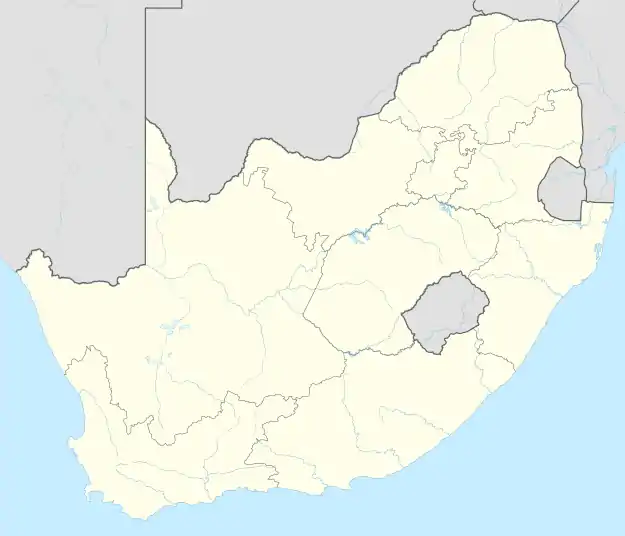De Kelders
De Kelders (or Die Kelders; Afrikaans: "the caves") is a coastal village in the Overberg District Municipality, Western Cape, South Africa.
De Kelders
Die Kelders | |
|---|---|
 | |
 De Kelders  De Kelders | |
| Coordinates: 34°34′S 19°21′E | |
| Country | South Africa |
| Province | Western Cape |
| District | Overberg |
| Municipality | Overstrand |
| Area | |
| • Total | 2.23 km2 (0.86 sq mi) |
| Population (2011)[1] | |
| • Total | 1,070 |
| • Density | 480/km2 (1,200/sq mi) |
| Racial makeup (2011) | |
| • African | 2.0% |
| • Coloured | 2.2% |
| • Indian/Asian | 0.1% |
| • White | 95.5% |
| • Other | 0.3% |
| First languages (2011) | |
| • Afrikaans | 84.4% |
| • English | 12.6% |
| • Other | 3.0% |
| Time zone | UTC+2 (SAST) |
| Postal code (street) | 7220 |
| PO box | 7220 |
| Area code | 028 |

Die Kelders Caves are an archaeological site that is relevant to human evolution. The site consists of two caves that contain human remains dating to the Middle Stone Age. The remains include isolated teeth, two manual phalanges, one pollical phalanx (of the thumb), and a mandible.[2] The assemblage contains at least 10 (mostly) subadult individuals. The morphology of some of these bones are similar to other Middle Stone Age sites across Africa, including Klasies River Caves, Equus Caves, and Witkrans.[2]
Holiday resort 19 km south-west of Stanford, between Gans Bay and Hermanus. Afrikaans for ‘the cellars’, the name is derived from caves in sandstone cliffs there. De Kelders is also an excellent whale watching location.[3]
References
- "Sub Place De Kelders". Census 2011.
- Grine, Frederick E.; Marean, Curtis W.; Faith, J. Tyler; Black, Wendy; Mongle, Carrie S.; Trinkaus, Erik; le Roux, Stephan G.; du Plessis, Anton (2017-08-01). "Further human fossils from the Middle Stone Age deposits of Die Kelders Cave 1, Western Cape Province, South Africa". Journal of Human Evolution. 109: 70–78. doi:10.1016/j.jhevol.2017.05.009. ISSN 0047-2484.
- "Dictionary of Southern African Place Names (Public Domain)". Human Science Research Council. p. 139.
.svg.png.webp)